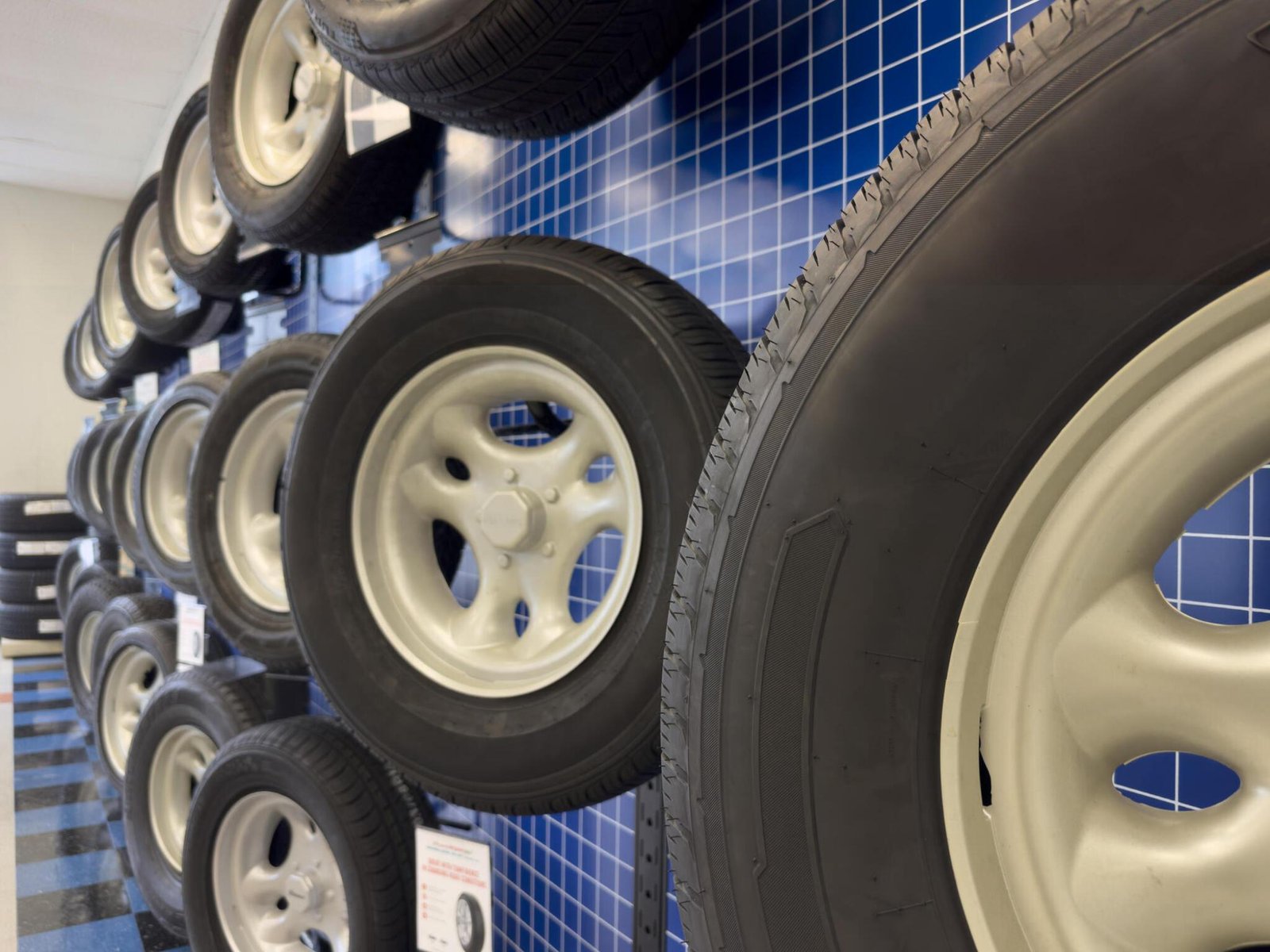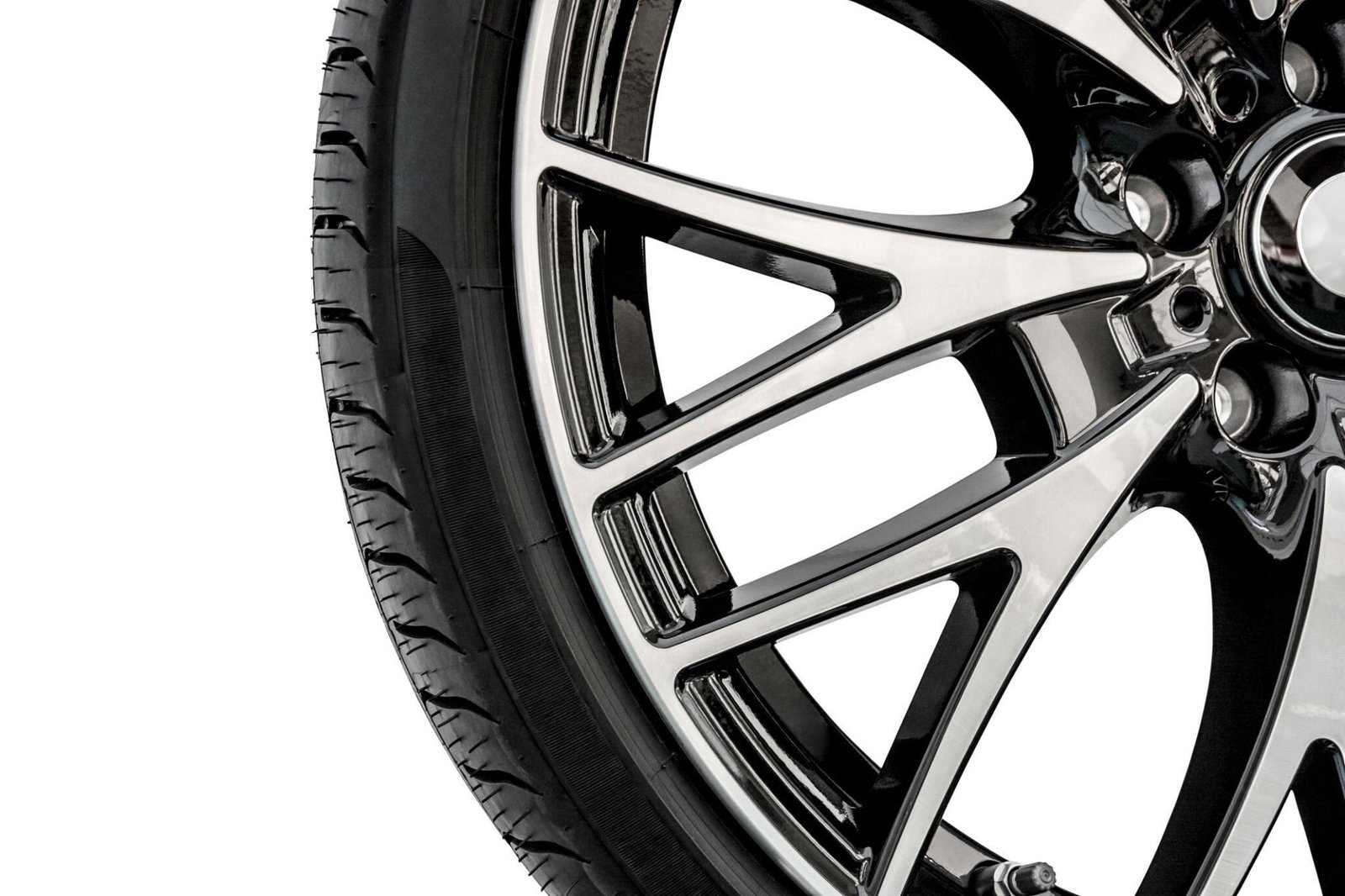Last Updated on April 22, 2024
Introduction to Different Tire Brands
Tires are essential to automobiles; they influence how safe you are, how well your vehicle handles the road, and how much gas you consume. The tire industry is constantly changing and developing new and improved tires. There are numerous tire companies, each with its advantages and disadvantages. Learning what each brand offers to choose the best tires would be best. This guide will assist you in selecting the ideal tires for your needs while highlighting the cutting-edge technology used in their manufacture.
The Tire Industry at a Glance
The tire business is vast and makes a ton of money! It’s gotten even more significant since cars were first invented. Here’s why:
- Better Tires: Science has made tires way cooler! They last longer, grip the road better, and keep you safer.
- Tires Around the World: Cars are everywhere now, so tire companies can sell their tires worldwide. This means they can make tires for different types of roads depending on what people in those places want.
- Rise of the Automotive Industry: As the automotive industry increases, especially with the introduction of electric and self-driving vehicles, the demand for high-quality tires tailored for these new vehicle types grows.
- Environmental Concerns: As people become more aware of environmental issues, eco-friendly tires are being developed to promote sustainability and lower carbon footprints.

The Importance of Understanding Brand Diversity
The diversity of tire brands shows the industry’s response to a range of consumer needs and market trends. Understanding these various types is essential for several reasons:
- Safety and Performance: Different brands provide goods tailored to specific driving circumstances (such as wet roads, off-road terrain, or high-speed performance), which have a direct impact on vehicle safety and performance.
- Cost-Effectiveness: With various fantastic budget brands, customers may select tires that meet their financial needs without sacrificing quality or safety.
- Specialized Needs: Some brands specialize in tires for certain vehicle types, such as heavy-duty trucks, motorbikes, or racing automobiles, meeting technical automotive requirements.
- Informed Decision: Knowing about different manufacturers and their offerings can help consumers make informed decisions based on their driving patterns, climate, and vehicle type.
Historical Evolution of Tire Brands
The history of tire brands is impressive. With a focus on innovation, adaptation to changing consumer needs, and technological breakthroughs, the tire industry has grown considerably, from the simple rubber strips of the eighteenth century to today’s complex and diverse offerings.
This progress reflects advances in materials and manufacturing techniques and the shifting dynamics of the global automotive industry. As we explore this history further, we discover the stories of pioneering brands and the advancement of tire technology, which has fundamentally impacted modern transportation.
The Early Days of Tire Manufacturing
Tyre manufacture began in the late nineteenth century, coinciding with the invention of the vehicle. Tires began as basic, solid rubber strips placed on the wheels of carriages and early automobiles. 1888 John Boyd Dunlop invented the pneumatic tire, primarily used on bicycles. These early pneumatic tires represented a big step forward, offering more comfort and economy than solid equivalents.
Companies such as Michelin, Goodyear, and Continental emerged in the early twentieth century, making bicycle and vehicle tires. These firms were instrumental in the evolution of the tire industry, experimenting with various materials and designs to increase durability and performance.
Technological Advancements and Brand Emergence
Advances in technology have laid the groundwork for the changes in tire production. Key advancements include:
- Synthetic rubber was developed due to a lack of natural rubber during World Wars. This eased the scarcity and made room for more durable and versatile tires.
- Michelin invented radial tires in 1946, which were a game-changer. With their perpendicular steel belts, radial tires offered longer lifespans, better fuel efficiency, and improved safety.

- The development of tubeless tires improved safety by lowering the risk of unintended blowouts.
The Global Expansion of Tire Brands
Several factors contribute to the global growth of tire brands:
- Increased Automobile Ownership: As automobiles became more accessible worldwide, demand for tires increased, prompting tire companies to expand their reach.
- Globalization of Markets: In the second half of the twentieth century, brands established manufacturing sites and distribution networks worldwide. This spread was not confined to Western corporations; Japanese, South Korean, and Chinese brands entered the worldwide market.
- Partnerships and Mergers: Collaborations, mergers, and acquisitions became commonplace, allowing firms to leverage each other’s strengths and broaden their global presence. For example, the 1988 combination of Bridgestone and Firestone represented a big step forward in international expansion tactics.
Factors Contributing to Brand Diversity
Many manufacturers have made their mark on the tire market, delivering unique goods to fulfill various consumer needs. This brand diversity is due to numerous fundamental reasons that have created the tire market environment.
Technological Innovations
Technological advancements are a crucial driver of brand diversity in the tire sector. As technology advances, brands gain the opportunity to differentiate their offerings. The key innovations include:
- Advanced Rubber Compounds: New rubber compounds have produced more durable, fuel-efficient, and sustainable tires.
- Improved tire Designs: Innovations in tire tread design and sidewall construction have improved performance in various driving circumstances, including wet roads and off-road terrains.
- Innovative tires: Sensors and clever technologies have recently been integrated into tires, enabling real-time tire health and performance monitoring.
Geographic and Climatic Needs
Geographic and climatic conditions significantly impact tire brand diversity. Road conditions, weather trends, and driving habits differ by region, necessitating specialized tire types.
- Winter tires: In areas with harsh winters, companies have produced tires with distinct tread patterns and rubber compounds to improve traction on snow and ice.
- All-Terrain tires: For off-road circumstances, companies offer all-terrain tires built to last and perform well on rough terrain.
- Heat-resistant tires: In hotter areas, tires are intended to resist high temperatures while maintaining performance and safety.
This geographical and climatic customization has resulted in various tire types that address specific environmental circumstances.
Specialization and Market Segmentation
Specialization and market segmentation are essential for the creation of brand variety. Tire brands often specialize in particular segments to respond to specific consumer needs:
- Luxury Vehicle Tires: Some brands target the luxury vehicle market with high-performance, premium tires.
- Commercial Vehicle tires: Some brands specialize in heavy-duty tires for trucks and commercial vehicles, focusing on durability and load capacity.
- Economy Tires: Budget-friendly tire brands appeal to cost-conscious consumers by providing dependable performance at a lower price.
This segmentation allows consumers to select brands appropriate for their vehicle type and usage needs.
Competitive Dynamics and Marketing Strategies
Tire companies’ competitive dynamics and marketing strategies also contribute to brand diversity. In a bid to capture market share, companies employ various methods, including:
- Brand Positioning: Companies position their brands to entice customers, whether for performance, durability, or value.
- Global Marketing Campaigns: Tire companies use global marketing campaigns to build brand recognition and loyalty, differentiating themselves in a crowded market.
- Innovative Distribution and Sales Channels: To reach a wider audience, brands adopt innovative distribution strategies, including online sales and partnerships with automotive manufacturers.
Combining competitive strategies and marketing efforts helps create a unique identity for each brand, adding to the diversity in the tire industry.
Tire brand uniqueness results from various factors, including technological advancements, geographic and climatic requirements, market specialization, and competitive dynamics. This diversity represents the industry’s resilience and innovation, allowing consumers to choose from various items that meet their needs and preferences.
Understanding Different Tire Brands
Understanding the range of tire brands is essential for navigating the complex world of car maintenance and performance. Each brand has distinct characteristics, from cutting-edge technology and high-end performance to cost-effective durability and specialized applications. This variety serves various vehicles, driving circumstances, and consumer preferences, reflecting the tire industry’s ever-changing nature.
As we examine the distinctions between these brands, we gain insight into how they affect vehicle performance, safety, and the overall driving experience. Various brands, each catering to a distinct market group, characterize the tire industry. Understanding these contrasts is critical for consumers to make informed decisions that meet their needs and budget.
Premium vs. Budget Brands
The tire market is broadly divided into premium and budget brands, each targeting a different consumer segment:
- Premium brands, such as Michelin, Bridgestone, and Goodyear, are recognized for their high-quality materials, superior technology, and considerable research and development. Premium tires frequently provide improved performance, lifespan, and safety features. They are often preferred by people willing to pay a premium for superior quality and performance.
- Budget brands provide tires at a lower price point. Brands such as Kumho and Cooper Tires are dedicated to giving dependable performance at a moderate cost. These tires may lack the cutting-edge features of luxury brands, but they are appropriate for everyday use and for users who value affordability over advanced specs.
Specialty Tires: Performance, All-Season, and Off-Road
Specialty tires are designed to meet specific driving conditions and requirements:
- Performance Tires: These tires are designed for sports cars and high-performance vehicles. They have specialized tread patterns and rubber compounds for enhanced grip and high-speed handling.
- All-Season Tires: These tires are versatile and built to perform well in various conditions, including wet pavement and light winter driving. They are well-known for everyday use in areas with moderate weather conditions.
- Off-road tires: For cars regularly driven on uneven terrain, off-road tires provide enhanced durability, higher grip, and a rugged design to withstand demanding conditions such as mud, gravel, and pebbles.
Different companies may specialize in one or more categories, providing items designed for distinct driving experiences.
Regional Players vs. Global Giants
The tire industry consists of both regional players and global giants, each with its strengths:
- Global Giants: Brands like Michelin, Bridgestone, and Continental have a worldwide presence and offer various tire types for several vehicles. They benefit from global fame, vast research facilities, and an extensive distribution network.
- Regional Players: These are brands that primarily focus on specific geographic markets. For instance, companies like Apollo Tires in India and Hankook in South Korea are also available. These brands often profoundly understand the local market needs and conditions and can offer products tailored to regional preferences and driving conditions.

Consumer Impact and Choices
The market’s diverse range of tire brands considerably impacts consumer behavior and preferences. Understanding these consequences can help consumers better navigate the market and make educated selections. Consumers’ tire choices have far-reaching implications for their driving experiences, safety, and overall vehicle performance.
Understanding the dynamic interaction between consumer preferences and the wide range of tire options is critical. Consumers have the power to optimize their road trips, from the impact of brand diversity on decision-making to the value of educated tire selections. As we delve into customer impact and choices in the tire sector, we discover the variables that influence these decisions and investigate future trends to improve the driving experience.
How Brand Variety Affects Consumers
The various tire brands cater to consumer needs, preferences, and budgets. This variety affects consumers in several ways:
- Increased Options: With a wider choice of options, consumers may select tires that meet their unique demands, whether for weather conditions, vehicle type, performance needs, or price limits.
- Quality and pricing Spectrum: The range of quality and pricing points allows consumers to prioritize based on their needs. While some people prefer premium products for improved performance and safety, others prefer less expensive ones to save money.
- Information Overload: However, the abundance of options can cause confusion and difficulty in decision-making. Consumers need assistance distinguishing between brands and determining which aspects are critical to their needs.
Making Informed Tire Purchases
To navigate this complex market, consumers must be equipped with the correct information:
- Understand Vehicle Requirements: It is essential to understand the factors specified by the vehicle manufacturer, such as tire size, load index, and speed rating.
- Research and Compare: Consumers should compare various tire brands and types. Online evaluations, expert comments, and consumer reports can be valuable resources.
- Consider Driving Conditions: tires should be chosen based on the regular driving circumstances the consumer faces, such as all-season tires for temperate temperatures and winter tires for snowy regions.
- Long-Term Worth vs. Immediate Cost: While financial constraints are significant, consumers should consider the long-term worth of tires in terms of durability, fuel efficiency, and performance.
The Future of Consumer Choice in Tires
Several factors will likely impact the future of consumer choice in tires:
- Technological Improvements: Consumers will have more advanced alternatives as technology progresses, such as intelligent tires equipped with sensors.
- Environmental Concerns: Raising customer knowledge of environmental issues will most likely lead to a shift towards eco-friendly tires, prompting brands to focus on sustainable manufacturing processes.
- Online Shopping Trends: With the rise of e-commerce and online shopping choices, consumers will have a more convenient way to compare and purchase tires, potentially changing the traditional retail environment.
- Customization and Personalization: Future developments may lead to more tire customization and personalization possibilities, catering to a market that loves unique and customized products.
Future Trends in the Tire Industry
The tire industry is expected to undergo substantial changes as an essential component of the automotive sector. Emerging technologies are driving these developments, as is a shift towards sustainability and the evolution of tire brands to satisfy new consumer expectations. The tire industry’s future looks promising, with technical advancements, sustainability initiatives, and revolutionary developments in customer tastes. As vehicle technology improves, so does the tire industry, with breakthrough innovations such as intelligent tires and airless designs primed to alter performance and safety expectations.
Sustainability is a driving factor, resulting in eco-friendly tire materials and environmentally mindful manufacturing processes. Furthermore, brand evolution projections point to a dynamic world in which specialization and customization are set to play critical roles. In this study of future trends, we will look at the exciting changes that will shape the tire industry in the coming years.

Emerging Technologies and New Players
Emerging technologies are set to revolutionize the tire industry in various ways:
- Innovative tires: Sensor integration into tires is a crucial trend. These unique tires can monitor road conditions, tire pressure, and temperature, providing drivers real-time data to improve safety and efficiency.
- Airless Tires: Companies experimented with stuffy tires to eliminate punctures and lower maintenance costs. These tires have a unique structure that keeps their form and durability even when not filled with air.
- Advanced Materials: Research into novel materials attempts to develop more durable, lightweight, and performance-oriented tires. This covers the application of nanotechnology and advanced synthetic chemicals.
- New companies: The tire industry is also attracting new companies, particularly from the technology sector, who contribute innovative techniques and technologies to tire design and manufacturing.
Sustainability and Eco-Friendly Tires
Sustainability is becoming a key focus in the tire industry:
- Eco-Friendly Materials: There is a rising preference for employing sustainable materials in tire production. This comprises bio-based compounds, natural rubber substitutes, and recycled materials.
- Reduced Environmental Impact: Tire makers aim to reduce the carbon footprint associated with tire production and end-of-life disposal. This includes recycling programs and the development of tires that improve fuel efficiency.
- Green Manufacturing: The sector also promotes more environmentally friendly manufacturing techniques, such as lowering water and energy usage and minimizing waste during production.
Predictions for Brand Evolution
The future of tire brands will most likely include numerous evolutionary trends:
- Increased Specialization: Brands may become more specialized, focusing on niche markets like electric vehicles, self-driving cars, or certain weather conditions.
- Customization: Tire customization may increase, allowing consumers to have tires that match their preferences and driving behaviors.
- Brand Collaborations: Collaborations between tire businesses and vehicle manufacturers, technology firms, and corporations from other industries may become increasingly widespread, resulting in innovative products and services.
- Global vs. Regional Focus: Some businesses may continue to grow their global presence, but others may concentrate on regional markets, catering to local requirements and preferences.
Conclusion & Recommendations
The tire industry is complicated and diversified, with a rich past and a dynamic present. Our investigation yielded several key findings, including:
- Brand Diversity: The tire brand selection serves various consumer needs, from premium to cheap options and specialized tires for different driving circumstances.
- Technological Innovations: Technological advances have had a substantial impact on tire design and performance, resulting in the development of intelligent tires, eco-friendly materials, and innovative production techniques.
- Consumer Choice and Impact: The range of brands and products influences consumer choices, emphasizing the necessity of making informed judgments based on vehicle needs, driving conditions, and personal preferences.
- Sustainability Trends: The growing emphasis on sustainability pushes the development of eco-friendly tires and green manufacturing techniques.
The Road Ahead for Tire Brands
Looking ahead, tire brands will encounter both difficulties and possibilities. Ongoing technological advancements, consumer tastes, and environmental concerns will shape the future of tire manufacture and marketing. Brands that adapt to these changes, prioritize innovation, and meet the growing demand for sustainability are likely to flourish.
Consumers must stay current on the newest tire technology advances and industry trends to navigate an ever-changing market. Understanding the differences between tire types, the implications of emerging technology, and the significance of environmentally friendly solutions will be critical in determining the best tire selections.
Why choose Tire Easy?
For those looking to make informed tire purchases that align with these insights, Tire Easy offers an extensive selection of tires to meet every need. Whether you’re searching for high-performance tires for your sports car, durable all-terrain tires for off-road adventures, or cost-effective tires for everyday use, Tire Easy has you covered.
With our user-friendly website, finding the perfect tire is easy and convenient. You can browse a wide range of options from leading brands, compare features, and make purchases all from the comfort of your home. Plus, our detailed product descriptions and customer reviews provide valuable insights to help you make the best choice for your vehicle.
Ready to find the perfect tire for your needs? Visit Tire Easy now and explore our collection. Choose quality, performance, and convenience all in one place.
Click here to find your perfect tire
FAQs
How significant is the tire brand?
A tire brand is essential since it often represents the tire’s quality, durability, and performance. Premium brands usually offer advanced technology and superior performance, whereas budget brands prioritize price. Your brand choice should be based on your driving needs, car type, and budget.
Are there differences between tire brands?
Quality, technology, tread patterns, and materials vary significantly across tire companies. These variations influence the tire’s performance, durability, and suitability for various driving circumstances or vehicle types.
Why do modern tires include so many different types of rubber?
Modern tires use different types of rubber to suit different performance requirements. Some rubbers provide better grip and flexibility, while others offer more durability and wear resistance. The variety of rubber types enables specialized tires to be adapted to certain driving situations and needs.
What are the reasons behind tires?
Tires are necessary for producing traction, bearing the vehicle’s load, absorbing road shocks, and maintaining safe and efficient vehicle handling. They are the only point of contact between the car and the road. Hence, their role is essential for overall driving safety and performance.
Is it acceptable to have two different brands of tires?
While it is usually suggested to use the same brand and kind of tires on all four wheels for consistent performance and handling, having two different brands of tires that are similar in type, size, and tread pattern is acceptable. Refer to your vehicle’s manual or a tire professional for precise advice.
Does brand matter in tires?
The brand matters in tires since it frequently represents the product’s quality, technological innovation, and dependability. Different brands offer unique strengths, such as longevity, performance in specific conditions, or value for money, which can significantly impact your driving experience.
Are all four tires required to be the same brand?
All four tires should have the same brand, model, and tread pattern for consistent performance and handling. This consistency is critical for ensuring balanced driving dynamics and safety. In some circumstances, matching front and rear tires may be sufficient, depending on the vehicle and driving conditions.
What if one of the tires is not the same brand?
If one tire is from a different brand, it may result in inconsistent handling and performance, mainly if the tread pattern or tire specifications differ significantly. Try maintaining consistency in tire brands and models for optimal vehicle safety and performance.









